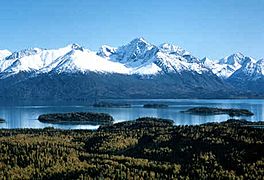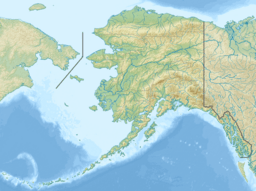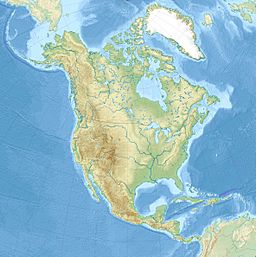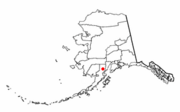Lake Clark (Alaska) facts for kids
Quick facts for kids Lake Clark |
|
|---|---|
 |
|
| Location | Lake and Peninsula Borough, Alaska, US |
| Coordinates | 60°14′39″N 154°17′07″W / 60.24417°N 154.28528°W |
| Native name | Qizhjeh Vena Error {{native name checker}}: parameter value is malformed (help) |
| Basin countries | United States |
| Max. length | 69 km (43 mi) |
| Max. width | 8 km (5.0 mi) |
| Max. depth | 322 m (1,056 ft) |
Lake Clark is a large and important lake located in southwest Alaska. Its name in the Dena'ina (an Alaska Native language) is Qizhjeh Vena. This means "place where people gather lake." The lake is about 64 km (40 mi) long and 8 km (5.0 mi) wide. It is a key part of the natural landscape in this wild region.
The water from Lake Clark flows out through Six Mile Lake. From there, it continues into the Newhalen River, which then empties into Iliamna Lake. This network of lakes and rivers is vital for the local environment.
Contents
Discovering Lake Clark
Lake Clark was named after a man named John W. Clark. He was the chief of a trading post in a place called Nushagak. In February 1891, an expedition, which is like a journey of exploration, reached the lake. This trip was paid for by a weekly magazine. John W. Clark was the first American non-Native person to see the lake during this expedition.
What's in a Name?
The original people of this area, the Dena'ina Athabascan people, had their own name for the lake long before John W. Clark arrived. They called it Qizjeh Vena. This name is very meaningful. It tells us that the lake was a special gathering place for people. It was likely a spot where different groups would meet, trade, and share stories.
A Special National Park
Lake Clark is not just any lake. It is located entirely within the Lake Clark National Park and Preserve. This park is a huge protected area. It was created to keep the natural beauty and wildlife of the region safe. The park covers a vast area of mountains, volcanoes, glaciers, and wild rivers.
Why is Lake Clark National Park Important?
Lake Clark National Park and Preserve is very important for many reasons. It protects a wide variety of animals, including brown bears, moose, caribou, and many types of birds. The lake itself is a vital habitat for fish, especially sockeye salmon. These salmon travel from the ocean to spawn in the lake's rivers. This makes the park a key place for wildlife to thrive.
The park also protects important cultural sites of the Dena'ina people. It helps preserve their history and connection to the land. Visitors can enjoy activities like fishing, kayaking, and wildlife viewing in this amazing natural setting.





